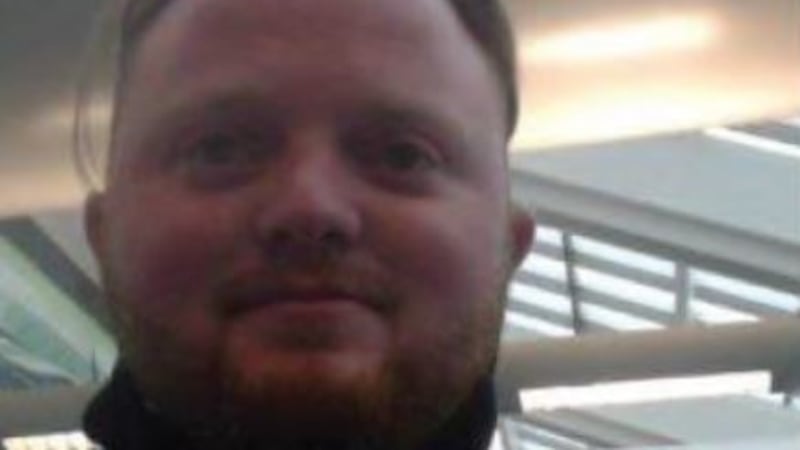On a busy country road, a small patch in the margin glows with bunches of fresh flowers and artificial roses spell out a name. For several years those poignant offerings have been a constant reminder of sudden loss and of those who tend to this dusty roadside margin as tenderly as any formal grave. This was where our beloved boy took his last breath, it tells the world, the last place he was still alive.
It’s hardly surprising that such sites become a sacred place. They represent the living person in their last moments. No cold-eyed Yeatsian injunction to pass by, but the opposite: a plea to remember.
They come to mind this morning as the traumatised families of Creeslough wait to hear the outcome of a planning decision. This relates to the site where 10 people died in a furnace of twisted metal after an explosion over the shop and filling station in the village just over two years ago. The youngest was five, the oldest 59.
The reimagining of such a site is often contentious. Eight years on, the issue is still being painfully teased out in the case of London’s shrouded Grenfell Tower where a fire killed 72 people. Forty-three years after the unlawful killing of 48 children and young people in the Stardust inferno, the site has been finally reimagined in the form of 10 artists’ studios, a lifeline for young creatives. When it opened in December it was welcomed as “a new beginning” by Fidelma Lawless, whose 18-year-old sister Sandra died in the fire.
READ MORE
What is painfully obvious is that no site bearing the weight of such trauma can simply carry on as before.
Yet just 16 months after the Creeslough tragedy, the site owners, Vivo Shell Limited, applied to replace the ruin of the shop and filling station with another shop and filling station, only on a much larger scale.
The plan includes two memorials to those who died on the site, both situated on an operating garage forecourt. One is a sculpture of 10 lit steel poles – “a respectful ode to their lives at the location of their unfortunate demise”; the second a green area “which will allow for a future memorial to be erected”.
[ Seán Moncrieff: When inexplicable tragedy occurs, we all feel itOpens in new window ]
The architect’s image places the sculpture at the far right corner of the supermarket frontage beyond a run of parking spaces. Half the image is of a car. The proposed “memorial garden” is a small kerbed corner area beside a bicycle rack and traffic moving through the forecourt.
Submissions to the council included several from Transport Infrastructure Ireland (TII), asserting that the whole scheme “would adversely affect the operation and safety of the national road network ...” The moral heart of it was conveyed through objections from bereaved families, survivors and health professionals.
The site ... is not just a plot of land or a development site, but a place marked by immense loss and emotional trauma
— Darragh Mackin
“They plan to install petrol pumps on part of the site where my wife took her last breath, thus allowing people carry on as if nothing happened,” wrote Derek Martin, whose wife Martina died in the explosion. He summarised the proposed memorials as “a small grass area beside bicycle stands and air/vacuum area. The 10 steel poles beside a loading bay just adds to the insult”.
Hugh Harper, whose 14-year-old daughter Leona died in the shop, described the harrowing scene on the site as he and his family watched people strive to retrieve bodies from the rubble until finally it was his family’s turn to be called. The digger was turned off and firemen stood by “to preserve some dignity”, as the family walked to identify their child.
Yet the tone of the submissions was respectful and nuanced overall. They accepted the need for a shop, post office and filling station in the village, with some objecting to the use of the site and others to the city suburb-style scale of the scheme. Nor were they insensitive to the site owners’ circumstances. Some suggested that, in view of all the money raised, a new site could be found to rebuild or a meaningful memorial incorporated into any development.
But the hurt of seeing such a sensitive space proceed through the planning process as if it was just another commercial development cut deep, especially since the county council had given assurances that any decision regarding the site “would be on hold until such times as investigations have been determined”. Yet the same county council had been integral to an ambitious €12 million regeneration plan for Creeslough announced last March, including a new community hub with sports facilities, counselling rooms and event spaces.
No issue of this nature is as simple as it seems, legally or otherwise. But as solicitor Darragh Mackin wrote on behalf of some of the families, “the site ... is not just a plot of land or a development site, but a place marked by immense loss and emotional trauma ... and the sensitivity of any development here should be prioritised above commercial interests.”
It is that simple.
















